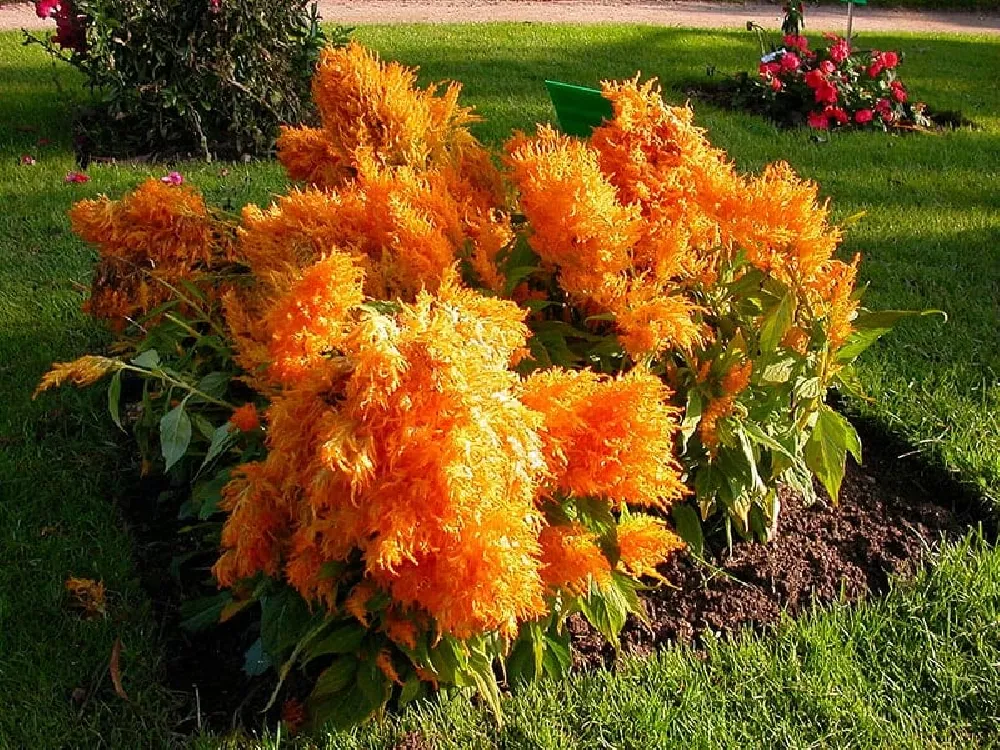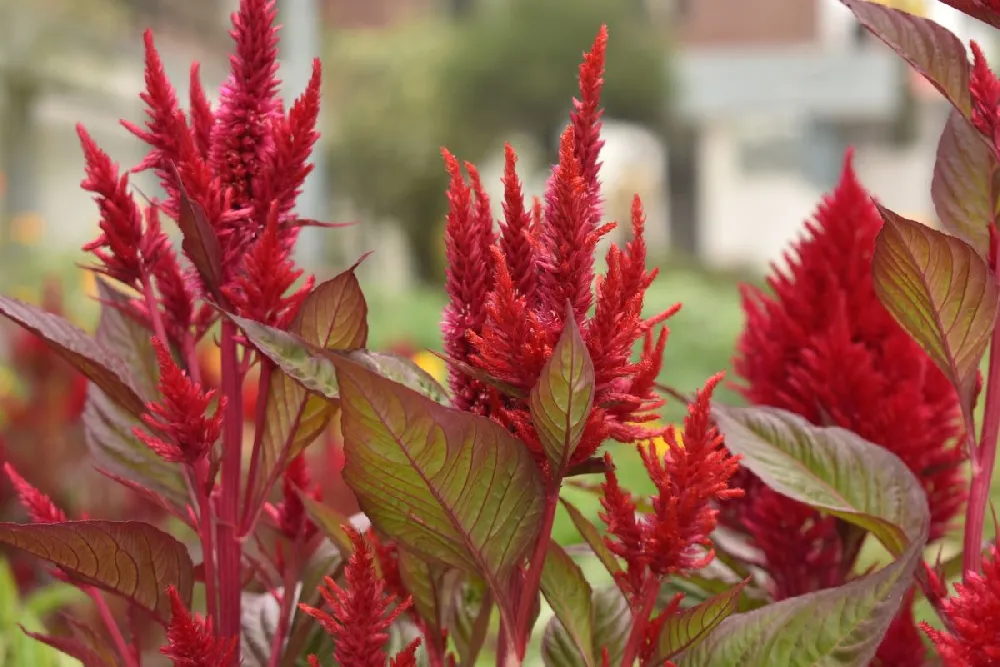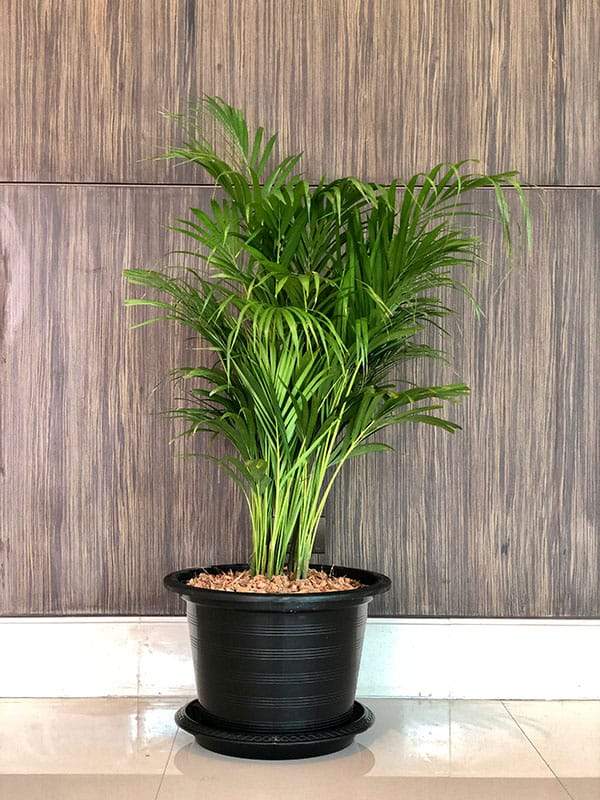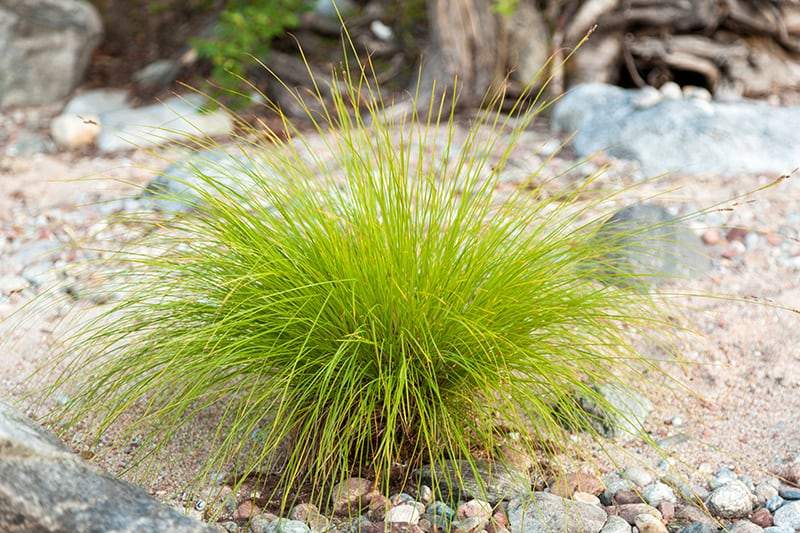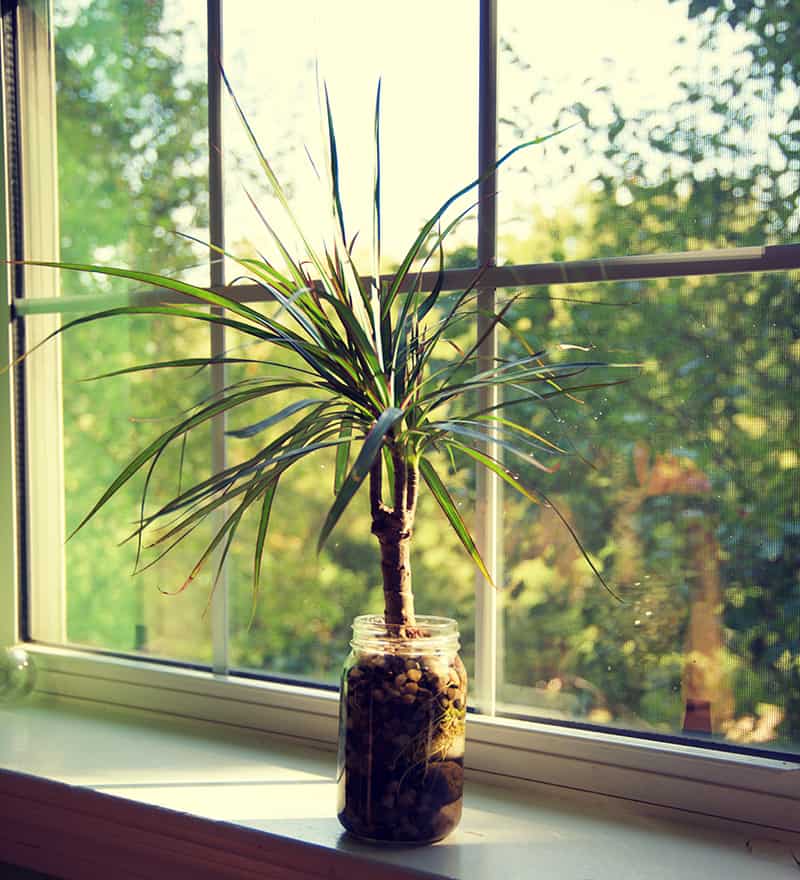- Home >
- Celosia
Celosia for Sale - Buying & Growing Guide
2 Results
Planting and Care
Planting instructions
Plant your celosia in a location where it will get plenty of sun. Celosia is a perennial in zones 10-12. In cooler locations, celosia plants will need to be replaced annually. When planting outdoors, space celosia plants six to eight inches apart in well-draining soil. To germinate seeds indoors, poke seeds about one-quarter of an inch below the soil in peat pots four to six weeks before the final frost. Keep seedlings in a warm location and plant outdoors after the final frost. Flowers appear in approximately 90 days.
Watering and nutrients
Celosia is moderately drought tolerant. Water your celosia plants when the top layer of the soil feels dry. Never soak the soil as celosias are prone to root rot, which will quickly kill the plant. Water once or twice weekly in the summer, and once a week in the winter. Seedlings need more water than mature plants. Keep the soil slightly moist until replanting. Always check the soil first-touch is the best way to determine whether a celosia plant needs more or less water.
Pruning
Celosia does not usually require significant pruning, but gentle shaping will make it look its best. To shape the plant, pinch off its longer stems. Remove leaves that look unhealthy or have dried out. Do not pull off the leaves; pinch or cut them with sharp garden scissors. Also, be sure to remove dead flowers, as this will encourage the growth of new buds. Stems that are broken should be pruned below the defect. Never leave damaged stems on a celosia, as disease could enter the plant.
Pests and diseases
Celosias are generally hardy but are susceptible to fungal disease. Check regularly for leaf spot, which shows up as brown areas on the leaves. Pinch off the affected leaves to prevent the fungus from spreading to the rest of the plant. Grayish-black marks on the stems may mean root rot. Give your celosia plants plenty of aeration and make sure they’re in an area that gets plenty of sunlight. If you keep your celosia indoors, it may attract mites, which feed on leaf sap. To control mites, lightly spray the leaves with a mixture of one teaspoon of mild dish liquid in one liter of water.
Light
Celosia is a full sun plant. Position it in a spot where it will receive at least 8 hours of sunlight each day for maximum growth. It can also tolerate partial shade, but a full sun position will yield the best results and produce a greater abundance of flowers.
Temperature
Celosia plants need warm temperatures upwards of 80 °F to germinate, and they also need continued warm weather to thrive once mature. They are commonly grown as annuals in zones 2 to 9, but they can survive as perennials in USDA plant hardiness zones 10 and 11, where winter temperatures do not drop lower than 30 °F.
Propagation
These plants grow well from seed, germinating easily in the right conditions. The plant blooms approximately three months after germination, so it’s a good idea to get a head start on the growing season and sow the seeds indoors around six weeks before the last frost is expected, as this will produce earlier flowers. Use a seed tray and spread the seeds across high-quality potting soil, then cover with an extra quarter-inch of soil.
Celosia requires warm soil to germinate, so use a heating pad or supply bottom heat if possible. Ideal daytime temperatures are in the region of 80 °F, and nighttime temperatures between 10 and 15 degrees lower than this. The soil will need to be kept consistently moist, which is best achieved with a daily water spray. Cover the tray with clear plastic to create a humid environment similar to a greenhouse, removing the plastic once seedlings have developed. Light is not required for germination, and too much light can actually prevent the seedlings from forming, so situate the tray in shaded but not dark position.
Once you have seedlings, thin out the weakest, leaving only the strongest seedlings to repot or plant outside. Seedlings should be transplanted directly to the ground outside once the risk of frost has passed and should be kept at a distance of 8 inches from each other to allow adequate growing space. Celosia has delicate roots that can be inhibited by weed growth. To prevent weed roots from killing off your celosia seedlings, apply a few inches of organic mulch around the top of the soil when you plant your seedlings to prevent weeds from forming.
Once mature, each celosia bloom is made up of hundreds of tiny flowers, with each of these flowers producing tiny seeds that will self-seed to ensure plenty of new plants each year. The plant readily self-seeds with no intervention necessary to encourage growth.
Flowers
Depending on the variety of the celosia plant, the flowers can drastically differ in appearance. Some varieties have feathery round blooms, while others have tall spiky arrowhead flowers or those which resemble bottle brushes. They can bloom for up to 10 weeks, in summer through fall, offering an array of rainbow-colored flowers to the garden.
Typically, the flowers bloom until the first frost, which will kill them off, though it’s a good idea to cut the flowers just before the first expected frost, as they make excellent bouquets. You can expect cut celosias to last up to 10 days in a vase of water.
Unlike many flowering plants, the celosia can produce an abundance of blooms without the addition of fertilizer, making it an exceptionally easy-care flowering plant. Though it will thrive without fertilizer, it will benefit from a soil high in organic matter, and you can add a water-soluble monthly fertilizer if you wish.
Taller varieties will need to be staked to prevent the weight of the flowers from causing the stems to droop. You can tie them to taller, stronger plants nearby or fix them to a fence. Pinching off stems as the plant grows will encourage a bushier growth from which more flowers will bloom, and you should also deadhead flowers once they are spent as this will also encourage the plant to put more energy into producing fresh blooms.
Celosia Plant Varieties
There are over 60 species of celosia plants that fall into three main categories: crested, plumed, and spiked.
Crested Celosia
The crested types of celosia belong to the Celosia cristata variety. They have flowers that resemble a rooster’s comb, hence the common name of ‘cockscomb flower.’ These flowers are also said to resemble to look of a brain or are often compared to coral. These flowers are typically available in vibrant and striking colors, such as dark red, and gold; however, it’s common for the plant to only produce one flower at a time. This variety is the largest of all the celosia plants.
‘Amigo Red’
This crested variety is compact, growing to just six inches tall, with a six-inch spread. It works well in rock gardens, container pots, or as a border and bedding plant. The striking flowers are very unusual looking, adding some great interest to gardens. The blooms of this variety are red, with fine lines of yellow running along the edge of some of the ruffled petals. It is very drought-tolerant and also has good resistance to high levels of heat, making it a good choice for adding color to desert gardens (Better Homes and Gardens).
Plumed Celosia
The plumed types of celosia belong to the Celosia plumosa variety. They feature feathery soft flowers that have a velvety texture. The foliage of this variety is quite broad, forming a dense base from which the flowers stand high above.
‘Fresh Look Yellow’
This variety flowers heavily, so it is ideal for adding shocks of vibrant color to the garden. This particular variety grows to around 20 inches in height and is well suited to being grown both directly in the ground, as well as in container pots. The flowers are a striking shade of yellow, with a feathery appearance.
Spiked Celosia
The spiked types of celosia belong to the Celosia spicata variety. The flowers resemble wheatgrass, and therefore, this type of celosia is also sometimes referred to as wheat celosia. The flowers of these varieties stand upright like tall candles and appear in more subtle colors compared to other celosia flowers. The plant produces such an abundance of flower stems that it can actually become so dense that it takes on the appearance of a shrub.
‘Flamingo Feather’
This variety of celosia can grow up to four feet tall, making it ideal for adding color to the back row of your garden. The flowers are a soft pink color and are especially good for making dried flower displays.
‘Intenz’ Celosia argentea
This variety of celosia features flowers that bear a striking resemblance to bottle brushes. They bloom in a soft lavender color, with a slightly more pronounced purple shade at the tip. As a small variety, this plant grows to around 12 inches in height, making it ideally suited to use in container pots and even in hanging baskets. The flowers bloom for most of the season, adding pretty color to the garden all summer long.
‘Glow Red’ Celosia argentea var. Cristata
This celosia variety has stunning bright pink flowers, but this is not the only interesting aspect of the plant. The foliage is also quite striking, as the green leaves feature subtle pink edging. This variety grows to around 14 inches in height, with its spiked flowers being held, pointing upwards above the foliage (Royal Horticultural Society).
FAQs
How do you harvest celosia leaves for food?
Celosia leaves are ready to pick after the plant is about four weeks old. Cut the leaves close to the plant’s stem with sharp garden scissors. Be careful not to damage the rest of the plant when cutting, as defects in the stem can invite disease. The leaves taste best when picked from a young plant that has not yet flowered. Leaves from a flowering celosia are somewhat stringy and can have a bitter flavor.
Is the entire plant safe to eat?
The celosia is non-toxic to humans and pets, making it an ideal plant for indoor herb gardens. The flowers, leaves, and stems of the plant are all edible. Celosias are prized in Africa and East Asia as an excellent source of vitamin A, vitamin C, and iron. The leaves can be eaten raw, parboiled, or sautéed. For a delicious side dish, add onion, lime juice, or a dash of chili oil. Celosia leaves soften quickly, so be careful not to overcook them. The flowers are commonly used in soups and stews or can be added as a garnish to salads.
What are the different varieties of celosia?
Celosias come in dozens of fascinating and beautiful varieties. These varieties are generally divided into three types: cockscomb (Celosia cristata), plume (Celosia plumosa), or wheat (Celosia spicata). The most well-known of these, cockscomb, grows arrowhead-shaped clusters of flowers. Plume celosia flowers are delicate and have a feathery look, while wheat celosia grows slender flower heads. The flowers are bright and cheerful, with red, yellow, orange, and pink being the most common colors.
Can you extend the flowering season?
Celosia has its own set point for producing buds. However, the right conditions will encourage flowers to stay bright and beautiful for the entire season. Indoor plants might not receive enough humidity, as artificial heat and air conditioning dry out the environment. Invest in a humidifier if the room is too dry. Disease can stunt flower growth, so check regularly for pests and mold. Make sure your celosia gets plenty of sun. If it’s planted in partial shade, indirect, bright sunlight should reach the plant for most of the day. Deadhead flowers by pinching, and fertilize your celosia once a month with a 3-1-2 liquid fertilizer for healthy, beautiful blooms.
